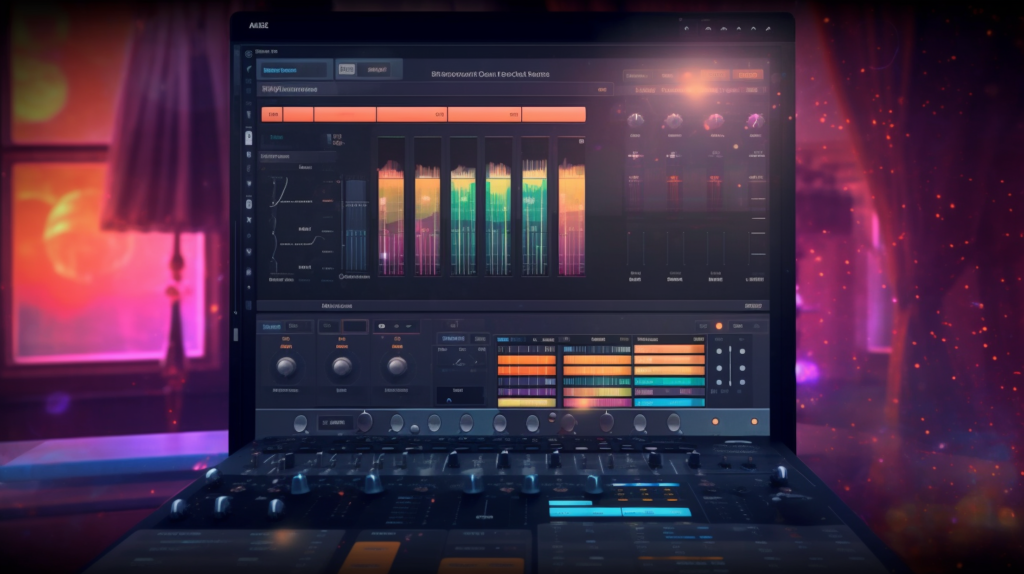
The art of crafting an effective buildup in your music is crucial for any producer looking to keep their listeners engaged and on the edge of their seats. A well-executed buildup can create tension and anticipation, ultimately leading to a satisfying release when the drop or climax arrives. In this guide, we’ll dive into the essential techniques and tips for creating compelling buildups in your music. Let’s get started!
Tension and Release: The Fundamentals of an Effective Buildup
A key principle of an effective buildup is the concept of tension and release. Tension is created by introducing various elements and techniques that gradually increase in intensity. The release occurs when the buildup reaches its peak, and the tension is resolved by transitioning into the drop or climax.
Tips for creating tension:
- Use rising pitch: Gradually increase the pitch of a sound or melody over time.
- Apply filtering: Slowly open up a filter, such as a high-pass or low-pass filter, to reveal more frequencies and increase the energy of a sound.
- Incorporate rhythmic elements: Add syncopated or off-beat elements to create a sense of unease or anticipation.
Tips for creating release:
- Introduce a new element: Bring in a new sound, instrument, or melody that contrasts with the buildup.
- Change the rhythm: Switch up the rhythm or tempo to signal a change in energy.
- Use silence: A brief moment of silence before the drop can create a powerful impact.
Sound Selection: Choosing the Right Elements for Your Buildup
Selecting the right sounds is a crucial aspect of crafting an effective buildup. Different sounds and instruments can contribute to the overall energy and tension of the buildup. Here are some sound selection tips:
- Percussion: Use snare rolls, hi-hat patterns, or other percussive elements to increase the intensity.
- Risers: Synth risers, reverse cymbals, and other rising sounds can help create a sense of anticipation.
- Atmosphere: Ambient pads, textures, or soundscapes can add depth and atmosphere to your buildup.
Remember, the goal is to create a cohesive and engaging buildup, so don’t be afraid to experiment with various sound combinations until you find the perfect fit.
Arrangement: Structuring Your Buildup for Maximum Impact
The arrangement of your buildup plays a significant role in its overall effectiveness. A well-structured buildup will gradually increase in intensity and complexity, ultimately leading to a satisfying release. Consider these arrangement tips:
- Layering: Combine multiple elements to create a richer, more complex sound.
- Progressive intensity: Gradually introduce new elements and increase the energy level of existing ones.
- Transition techniques: Use techniques like filter sweeps, volume automation, or pitch bends to smoothly transition between sections of your buildup.
Automation: Adding Movement and Dynamics to Your Buildup
Automation is a powerful tool for adding movement and dynamics to your effective buildup. By automating various parameters of your sounds and effects, you can create a sense of progression and evolution. Here are some automation tips:
- Volume: Automate the volume of your sounds to create crescendos and decrescendos.
- Panning: Automate the panning of your sounds to create a sense of movement and space.
- Effects: Automate effect parameters like reverb, delay, or distortion to add depth and excitement.
Experiment with different automation curves and shapes to find the perfect balance between subtlety and impact.
Finishing Touches: Polishing Your Buildup for a Professional Sound
Once you’ve crafted your effective buildup, it’s time to put the finishing touches on your masterpiece. Here are some final tips to ensure your buildup sounds polished and professional:
- Mixing: Balance the levels of your elements to ensure they blend well and don’t overpower one another.
- Spatial effects: Use reverb, delay, or other spatial effects to create depth and a sense of space.
- Compression: Apply compression to help glue your elements together and create a cohesive sound.
Remember, the goal is to create a buildup that sounds clean, polished, and ready to impress your listeners.
Producer’s Cheatsheet
| Technique | Tips & Tricks |
|---|---|
| Tension & Release | Rising pitch, filtering, rhythmic elements, introducing new elements, changing rhythm, using silence |
| Sound Selection | Percussion, risers, atmosphere |
| Arrangement | Layering, progressive intensity, transition techniques |
| Automation | Volume, panning, effects |
| Finishing Touches | Mixing, spatial effects, compression |
With this comprehensive guide in your arsenal, you’re now well-equipped to craft powerful and effective buildups in your music. Remember to experiment with different techniques, sound combinations, and arrangements to find your unique style. Happy producing!





